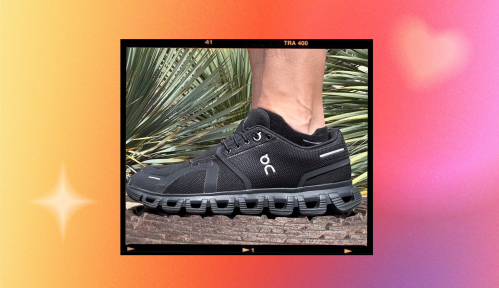I currently have 14,394 unread emails in one of my inboxes, a barrage of files cluttering my laptop desktop, and hundreds of thousands of photos (including screenshots I’ll surely never need to see again) on my iPhone. If these digital files were physical documents, they’d be swallowing my home whole. And while I definitely don’t need all (or even most) of them, for some reason, I can’t bring myself to delete the extraneous files. It seems that the advent of cloud-based storage has expanded the scope of hoarding disorder beyond stockpiling just material goods. Now, we’re all just a bunch of digital hoarders, clinging to matter with no critical mass.
Mayo Clinic defines hoarding disorder as “a persistent difficulty discarding or parting with possessions because of a perceived need to save them.” Digital hoarding is a relatively new subset of the condition—officially, at least—as it was first identified as a thing in 2015 by researchers in Amsterdam. “Patients with digital hoarding as a symptom of hoarding disorder experience a very high urge to collect and save their digital data,” says one of those researchers, psychiatrist Nienke Vulink, MD, PhD. “They feel an intense connection with their belongings—in this case, digital data—and are not able to throw things away.” Dr. Vulink says more research is needed to better understand the symptoms of digital hoarding, and how to treat them.
What we know about digital hoarding
Nick Neave, PhD, director of a hoarding research group at the University of Northumbria in Australia, agrees with Dr. Vulink that more studies are needed. But even given the preliminary grasp of digital hoarding disorder, Dr. Neave’s research has found differentiation among different types of digital hoarding: workplace and personal digital hoarding. “Workplace digital hoarding is passive,” he says. “You get sent stuff and don’t delete it, just in case.” This differs from personal digital hoarding, he says, which is active because you’re the one seeking out the movies you watch, the music you listen to, and the photos you take. (His team is creating a questionnaire to assess personal digital hoarding and hopes to have conclusive data to share soon.)
“Patients with digital hoarding as a symptom of hoarding disorder experience a very high urge to collect and save their digital data.” —Nienke Vulink, MD, PhD
While you may identify with either or both of Dr. Neave’s digital hoarding subgroups, Gail Steketee, PhD, head of the hoarding research group at Boston University, urges you to introspect about whether your files more so fall into a “hoarding” or “accumulating” camp. Because, she says, simply having things does not make you a hoarder. “Clutter alone does not define hoarding, but rather the inability to let go and the wish to save objects beyond what is reasonable to allow everyday living,” she says. “Clutter can happen because someone is messy, but if they don’t have a problem discarding things, it would not count as hoarding.”
This principle can extend to digital hoarding, but here, the vice at play is laziness, not messiness. I, for example, am simply too lazy to hack my inbox, clean off my desktop, and pare down my iPhone photos; for better or worse, my digital clutter doesn’t actually bother me.
While there aren’t yet specific treatment recommendations in place for treating digital hoarding, specifically, Dr. Vulink’s team has seen promising results in hoarding-disorder patients who partake in group cognitive behavior therapy. And if you, like me, aren’t losing sleep over your overflowing inbox, there are still some lifestyle shifts you can try. Justin Klosky, founder and CEO of professional organizing company OCD Experience, says there are major payoffs to be had from learning to manage your data more efficiently. “In terms of process, it’s very similar to [dealing with] the physical clutter that surrounds all of us. It’s just a little more overwhelming than the tangible stuff because you can see the tangible stuff more easily than you can see the digital stuff,” he says. Below, Klosky offers a few tips to get you started.
How to manage your digital-hoarding tendencies
Photos
The first step is to get all your photos in one place. “If they’re on your phone, computer, an old phone, camera, memory card, flash drive, take all of that data and move it into one folder,” Klosky says. “Once all of those items are in one folder, you can import that folder into the photo program of your choice.”
From there, adopt the mantra of “delete, delete, delete.” “When you’re staring at 15 photos and they’re all the same, pick your favorite two and just have the courage to delete the other 13,” Klosky says. Then, begin organizing the photos in whatever way makes sense to you. (Klosky recommends pulling out big events and giving them their own folder, and then organizing everything else by location or date.)
Obviously, the organizational step can be time-consuming, which is why it’s important to practice regular maintenance. To this point, Klosky suggests making the most of downtime, like while using the bathroom (sorry!) or during a mindless Netflix binge. And, if you want some third-party help, apps exist for that express purpose. Remove Master, for example, pulls your photos into a Tinder format, so you can swipe left or right to keep or discard them. Remo, meanwhile, automatically surfaces duplicate photos for easy deleting.
Emails
“Most people treat their inbox like a wasteland because they think, ‘If I need to find something, I can type what I’m looking for in the search bar, and eventually I will find it,'” Klosky says. Instead, he suggests treating your inbox like you would your physical mailbox. After all, you wouldn’t open the latter, peek at the envelopes, and then close it back up with the mail still inside, unopened. In other words, you have to deal with your mail as it comes in, daily.
The goal should be, he says, to get to that elusive inbox zero. To begin, move every message that isn’t from the current year into a folder called “old inbox.” Once all of those aged emails are out of sight, file everything remaining into specific folders. Eventually, all that should remain are the things you actually have to deal with or respond to, essentially transforming your inbox into your to-do list.
This system won’t work for everyone, but the general idea is to find an organization system that works for you, spend a chunk of time filing away old emails, and then work hard to maintain the progress so you never get to inbox 14,394 again.
Files
“Think of your desktop as a surface for you to be able to create on,” Klosky says. “If you have a desktop on your on your actual physical desk that is cluttered like hell, it would be almost impossible for you to focus, to create something new, or to find something with ease. If you have a physical desktop with little to nothing on it but what you are working on, it’s much easier for you to find things, interact with things, and create new things—the same directly applies to your digital desktop.”
So, to give yourself a refresh—for your desktop and all other digital files—move everything into one place and, again, be ruthless in deleting what you don’t need. From there, organize what’s left into tiered folders. The key is to make sure (just as you would when organizing your house) that there’s a place for everything so that you can file things as you go moving forward.
Since my digital hoarding hasn’t yet compromised my life or mental health, I think I’ll stick with my current messy system for the time being. But if the overwhelm starts to, well, overwhelm? I’m glad I have strategies at the ready for unearthing myself from the beneath the endless weight of data and the cloud.
While you’re in organization mode, here are five Marie Kondo-approved hacks for cleaning up your analog space. Plus, eight organizational tips to steal from tiny homes.
Sign Up for Our Daily Newsletter
Get all the latest in wellness, trends, food, fitness, beauty, and more delivered right to your inbox.
Got it, you've been added to our email list.











